Theaster Gates is one of the most amazing artists I have encountered in my decades of work in the cultural arena. I finally had the privilege of seeing him in person, at the New Museum, on the last day of his exhibition there. He performed with The Black Monks, a group of musicians he has been working with for years. Serious chops.
Theaster is described as an excellent tenor – he grew up singing in Church. He IS a fabulous singer. And dancer. His footwork is almost as interesting as how he takes gospel tunes and turns them into contemporary compositions. His musical comrades have a sense of where to go with him – it is clearly all improvised but I could feel the energy between them as Theaster moved through the space – surrounded by audience sitting and standing in the front and sides and the most amazing group of LESLIE speakers (each the size of a small refrigerator) mounted on the wall behind him. One of the more curious parts of his performance was when he would run past the musicians to the back of a tall “shack” made of corrugated metal. He would run back, disappear for a few seconds, then come back. It wasn’t long enough for a costume change. A swig of water?
It was only after the performance, while wandering around the space where he had repurposed bathroom tiles and fluorescent lights to make a shrine for his mother and wood from the Park Ave armory to make a variety of Frank Stella- inspired shapes, some of them crosses, that I was able to go to the back of the “shack.” The house of a GIANT church bell. Which made sense since the sound of church bells reverberated around the space throughout the 30 minute performance. Which isn’t really the right word for this event. A meditation, a dive into sound, a deeply spiritual experience.
Which brings me to why Theaster Gates is, for me, the quintessential Jerusalem Fellow, I badly paraphrase Theaster who said in the first moments of this musical offering. ‘I started in the church, I take my life there and make it into contemporary art…’
He is steeped in spiritual practice. He lives in his Chicago community and finds ways to use his art practice, his understanding of urban planning and his devotion to the people who he grew up with to create a model of artistic social engagement that should be emulated in every city. One could never superimpose his methods but for any artist wanting to be truly engaged in community, he is an exemplar.
We ask our Jerusalem Fellows to start a process that is about engagement with community. Over their ten-week residency, our Fellows, artists and cultural practitioners in a wide variety of disciplines, are hosted by cultural organizations in East and West Jerusalem. The goals of the residency are the development of understanding of the complexities of the city and building of long-term relationships with the people who live there. So far it has been an astonishing success. In the current climate, we sense that the members of Jerusalem’s ‘cultural eco-system’ are deeply grateful for such partnership. So we continue to build towards the Fall 2024 residency program.

Leave a Reply